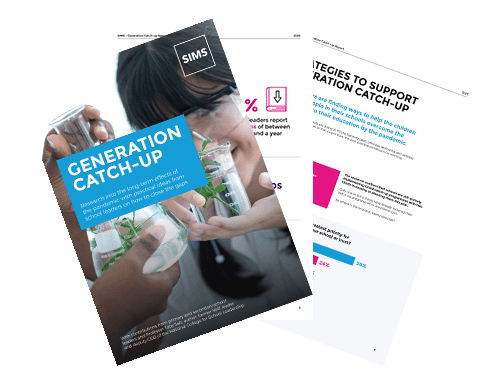
Three years on from the start of the pandemic, almost all school leaders (96%) say learning gaps are still having an impact on pupil achievement according to our Generation Catch Up report.
These gaps are affecting the youngest children in our primary schools right through to Year 11 students taking high-stakes exams.
However, the report shows that teachers and school leaders are designing innovative strategies using a range of resources to help them to tackle learning loss, and improve outcomes for all.
1. Closing learning gaps in reading and writing
Many school leaders are still actively implementing Covid catch-up programmes in their schools and the majority of that catch-up provision (56%) is aimed at improving literacy levels.
As proficiency in reading and writing enables children to access every curriculum area, it’s little wonder that these are key focus areas, both in primary and secondary settings.
Peter Hall, assistant headteacher at Beacon Academy, explains how his school is addressing reading gaps. “Children who are three or four years behind on reading age struggle with all subjects. We have employed some reading intervention tutors to find out exactly where pupils’ stumbling blocks are on a one-to-one basis, as each child has different difficulties.
“A lack of literacy skills indicates that those pupils need support in other subjects, too. For example, we looked at our assessment data, and identified the weakest pupils in history and geography, and spotted they also had the lowest scores in reading tests.
“This enabled us to focus on those who needed the most support, and monitor the interventions we put in place for them.”
2. Boosting recovery in writing skills
At primary school level, the pandemic had a significant impact on children’s writing as Donna Faley, headteacher at St Thomas More Catholic Primary, a voluntary academy, explains.
“It was very difficult to teach writing during lockdown and there are still wide gaps in writing skills.
“To address this, our English lead is working towards the National Professional Qualification in Leading Literacy (NPQLL). We have also embedded writing across the curriculum, which gives children opportunities to write at length in subjects like geography, history and RE.
“Producing longer, high-quality writing has really helped with children’s writing stamina.”
3. Rethinking the school day to bridge learning gaps
School leaders are being increasingly creative with their timetabling structure and staffing in order to respond to pupils’ needs. Some are setting up specific tutoring times, while others are creating bespoke intervention groups based on accurate data, both of which are effective ways to deliver targeted support.
“There are interventions in place for Year 11. They have an extra two and a half hours a week of English, maths and science on a two-week rota in tutor time and breaktimes,” reports Helen Stone, data manager at Southchurch High School.
Among other suggestions from school leaders were designing interventions that could be delivered by non-specialist staff, and creating online content that could be accessed from home, to supplement in-school support.
4. Identifying and addressing cohort-wide issues
While there is certainly a place for bespoke, personalised support, our survey also highlighted the importance of identifying and addressing learning gaps that affect all children across a year group.
Particularly in view of the fact that traditional patterns of need have shifted, and children who would have been of less cause for concern previously, are now under the spotlight, too.
Ieuan Price, director of digital learning at St Illtyd’s Catholic High School has seen a change in attitudes to learning on a whole cohort basis which needs to be addressed. “To respond to this, teachers are adapting tasks into shorter chunks to help children learn more independently and they are allocating more time in the lesson to explain new concepts.”
Covid is still casting a long shadow over children’s learning, but by making small yet effective changes to timetables, lessons and interventions, schools can help children recover from gaps in education caused by the pandemic.
To access our extensive, in-depth report, or to find out more about school leaders’ gap-closing strategies, download a complimentary copy of the Generation Catch-Up Report.

